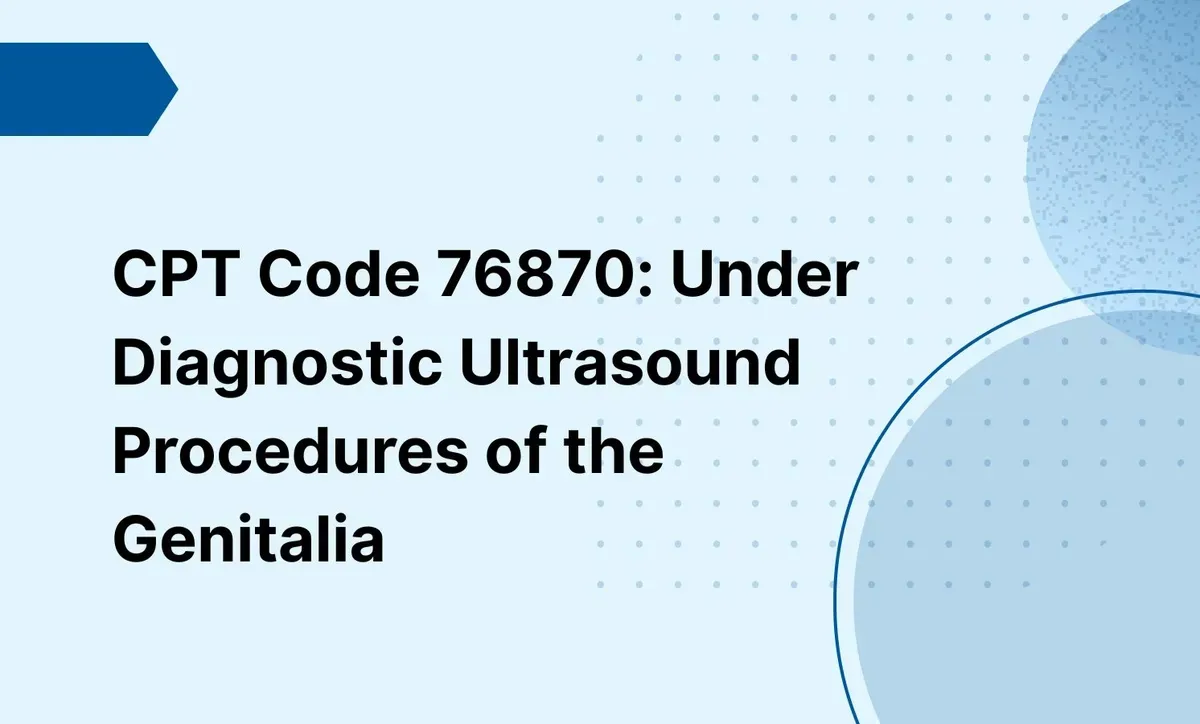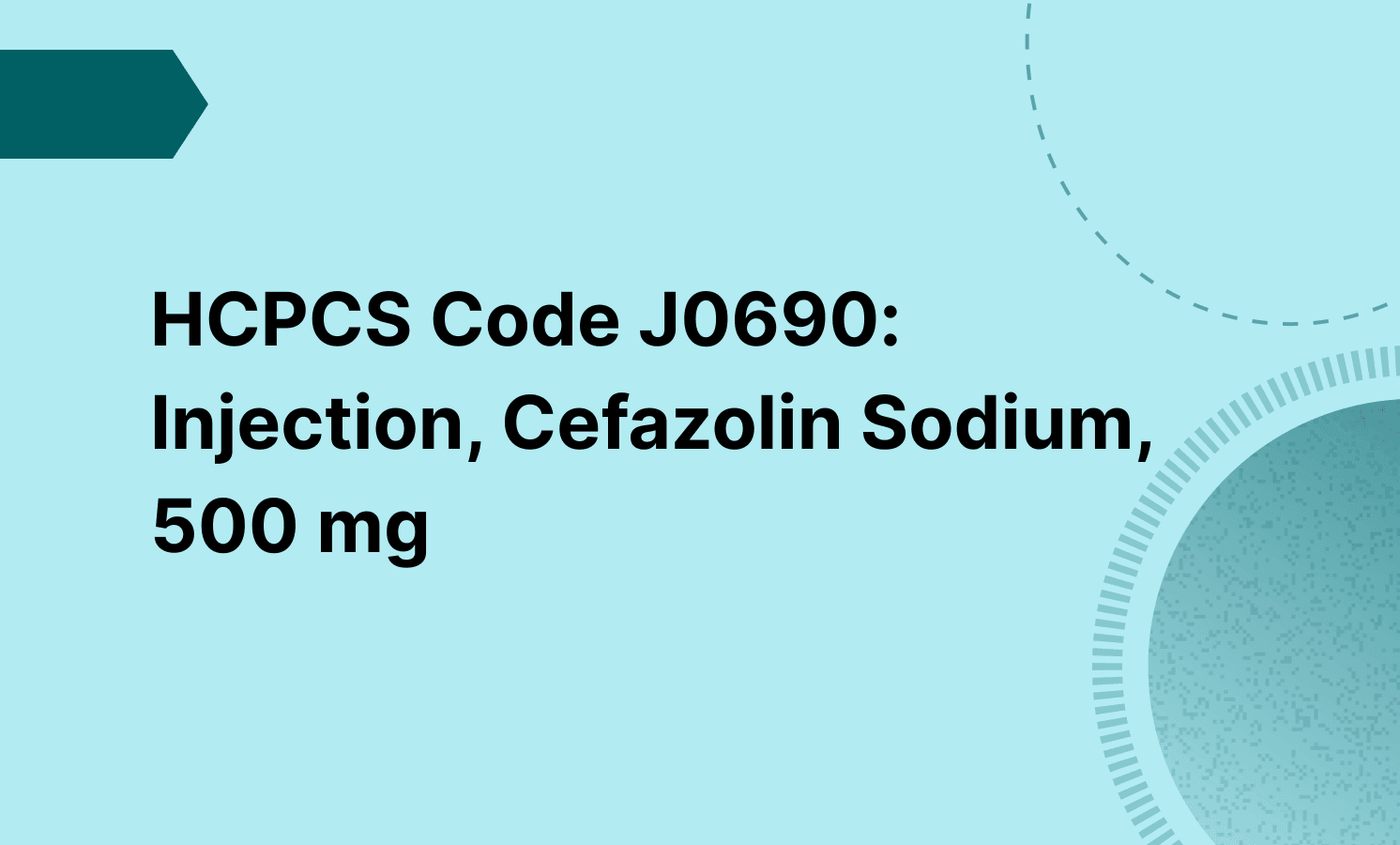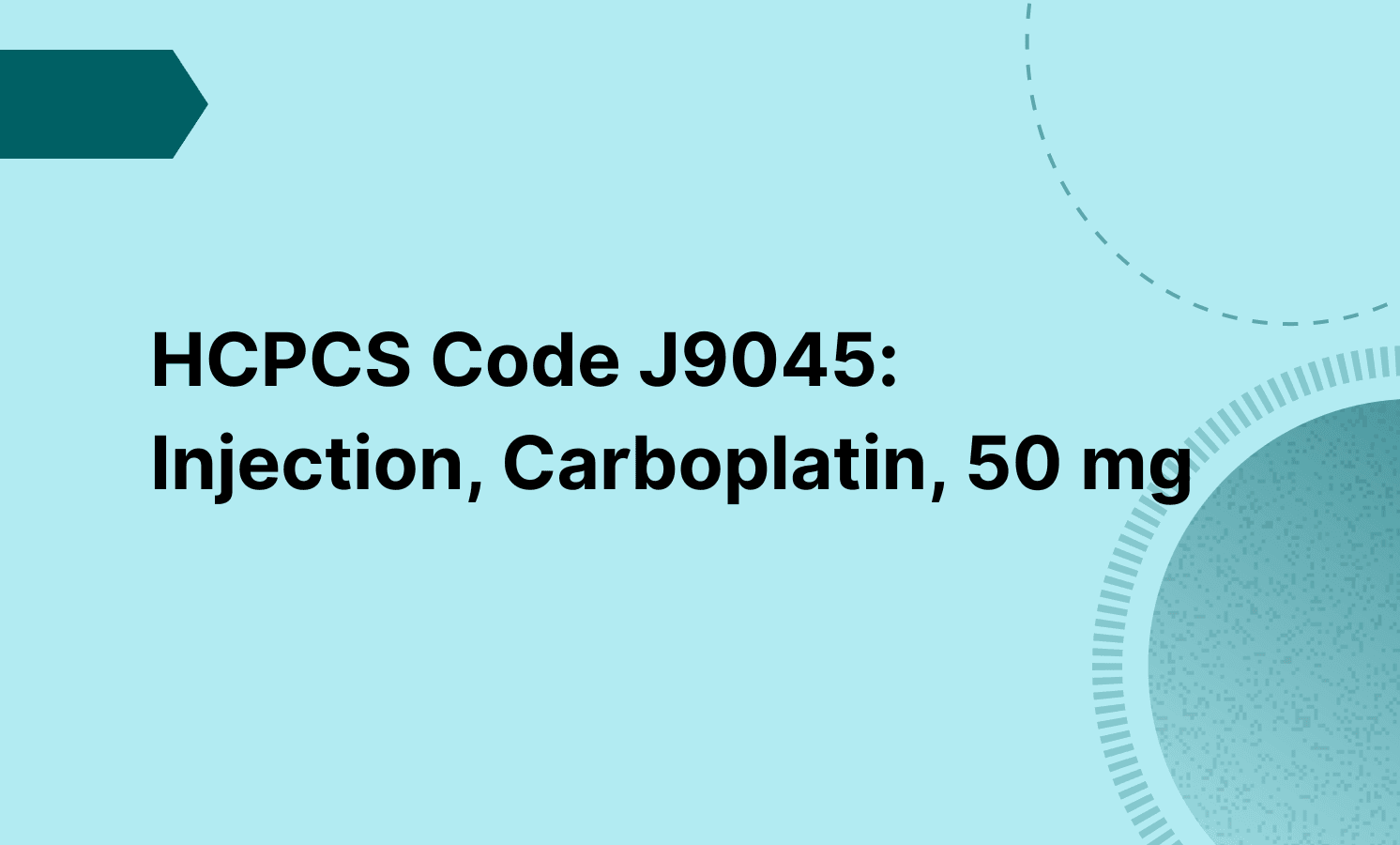CPT 76870 (scrotal ultrasound) can be billed with 55700 (prostate biopsy) or 93975 (duplex ultrasound) only if distinct, medically necessary studies of separate anatomical regions are clearly documented.

CPT Code 76870: Under Diagnostic Ultrasound Procedures of the Genitalia
Learn about CPT code 76870 for scrotal ultrasound procedures, including documentation requirements, billing guidelines, and related codes.
Use Code
Frequently asked questions
No, prostate volume measurement is not included in CPT 76870. This code strictly covers ultrasound imaging of the scrotum and its contents, not the prostate gland.
No, CPT 76870 is specific to the scrotum and testicular structures. For bladder imaging, you must use appropriate bladder-specific ultrasound codes, such as CPT 76857 or CPT 76770, depending on clinical necessity.
EHR and practice management software
Get started for free
*No credit card required
Free
$0/usd
Unlimited clients
Telehealth
1GB of storage
Client portal text
Automated billing and online payments






